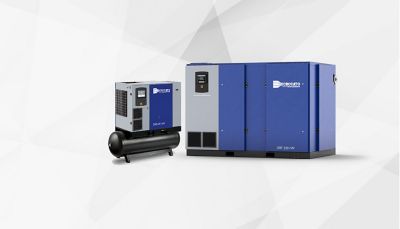Maintaining high quality compressed air is crucial for many industries. A refrigerant compressed air dryer is a key component in achieving this, as it effectively removes moisture from compressed air systems.
Whether you’re exploring the different types of dryers, troubleshooting issues, or understanding how to maintain them, this guide will walk you through everything you need to know about refrigerant air dryers.
What is a Refrigerant Dryer?
A refrigerant air dryer is a type of compressed air dryer that removes moisture by cooling the air until moisture condenses. This ensures the air that flows through your system is dry and clean.
Removing moisture is crucial in preventing equipment damage, corrosion, and product contamination in industrial applications.
 Refrigerant compressed air dryers play a crucial role in maintaining the quality and efficiency of compressed air systems
Refrigerant compressed air dryers play a crucial role in maintaining the quality and efficiency of compressed air systems
How Does a Refrigerant Dryer Work?
Refrigerant dryers work similar to air conditioners or refrigerators. The compressed air is cooled until the moisture in the air condenses into water. This water is then separated from the air and drained away: the air is dried and can be delivered through the system.
The result? Dry, clean air that helps maintain the integrity of your operations.
Types of Refrigerant Compressed Air Dryers
There are two main types of refrigerant compressed air dryers: cycling and non-cycling. Each offers unique benefits depending on the air demand and application.
Cycling Refrigerant Dryers
Cycling refrigerant dryers use a variable speed drive compressor that adjusts compressor speed based on the air demand. This makes them highly energy efficient and ideal for operations where air usage fluctuates.
Non-Cycling Refrigerant Dryers
Non-cycling refrigerant air dryers runs continuously at a fixed speed. They’re simple in design and suitable for applications with a consistent air demand, offering reliable performance with minimal complexity.
Why compressed air refrigerant dryers are important in industries?
Refrigerant compressed air dryers are essential in industries such as manufacturing, food and beverage, automotive, and electronics. They ensure that compressed air systems remain free from moisture – protecting sensitive equipment, maintaining product quality, and meeting strict industry standards. In the food sector, for example, dry air is necessary to prevent spoilage and ensure hygiene.
Common Issues with Refrigerant Dryers
Even high-quality refrigerant dryers can face occasional issues, such as:
- Clogged Air Filters: reducing airflow and efficiency.
- Insufficient Refrigerant Levels: causing inadequate cooling.
- Malfunctioning Thermostats: affecting temperature regulation.
- Drainage Problems: leading to water buildup and damaging the system.
Troubleshooting A Refrigerant Air Dryer
Here’s how to handle some common problems:
- Inspect and replace air filters regularly for optimal airflow.
- Calibrate thermostats and pressure gauges for accurate readings.
- Check refrigerant levels and top up if needed.
- Ensure proper drainage by maintaining valves and outlets.
Maintaining your Refrigerant Dryer
To keep your refrigerant air dryer running smoothly:
- Inspect and clean components like heat exchangers and filters regularly.
- Monitor the ambient temperature to ensure it’s within the unit’s design range.
- Schedule professional maintenance checks to catch issues early and extend lifespan.
How to choose the Right Refrigerant Air Dryer
Selecting the ideal refrigerant compressed air dryer depends on your specific needs:
- Compressed air demand - Match the dryer capacity to your air system.
- Energy efficiency – Opt for cycling models if your air demand fluctuates.
- Application requirements – Choose a dryer that meets your industry’s standards.
Buy a refrigerant dryer today!
A reliable refrigerant dryer ensures clean, dry air, helping your system run efficiently while protecting your equipment and products. If you’re unsure which dryer suits your application, reach out to our experts. They can help you find the perfect refrigerant compressed air dryer tailored to your needs.






